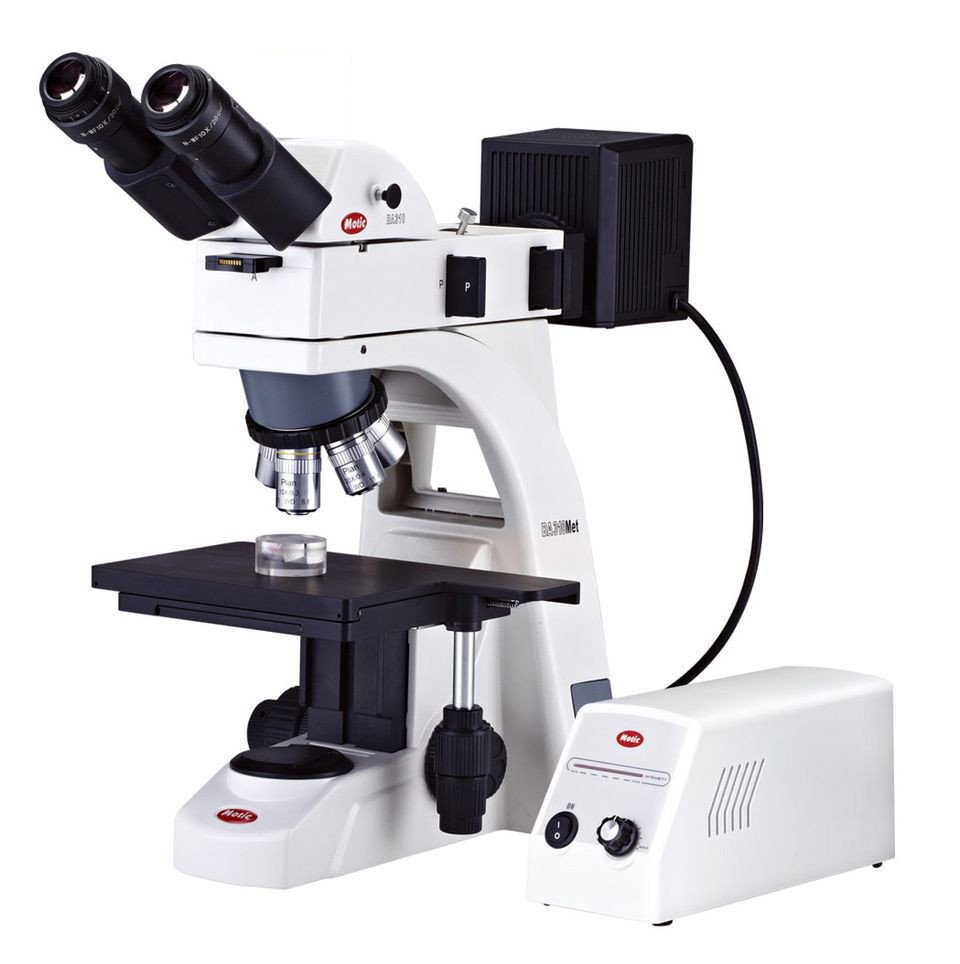Contents
Overview of Metallurgical microscopes
- Metallurgical Microscopes are mainly used in metallography, forensic, processing plastics, inspection of metals, semiconductor materials, laser systems, solar cells using both thin films and wafer technology and many other fields of material science.
- Metallurgical microscopes may also utilize darkfield microscopy, which is a specific technique that back-illuminates a sample in order to highlight specific features of the sample which include hairline metal fractures or flaws in precious stones.
- A metallurgical microscope is essentially a high-powered optical microscope that operates by making use of reflected light in order to illuminate and magnify images of opaque objects and specimens, including metallurgical items.
- Metallurgical microscopes are utilized in the aerospace industry, the automobile manufacturing industry, and by companies analyzing metallic structures, composites, glass, wood, ceramics, polymers, and liquid crystals.
- A metallurgical microscope is typically used in metallurgy, material testing and quality assurance applications for precisely measuring sample thickness, layers, fold lines, film and electroplated coatings.
- Metallurgical Microscope (BMM-2000) Product Description: BMM-2000/BMM-2000BD Industry checking and measure microscopes are suitable to observe surfaces structure and geometry of workpiece.
- A metallurgical microscope is a versatile and efficient type of optical microscope that allows you to conveniently image and manipulate large and metallurgical specimens.
- Metallurgical microscopes often come with a darkfield option that can make detecting anomalies and fractures in certain materials easily detectable.
- Metallurgical microscopes are utilized to examine micron level cracks in metals, very thin layers of coatings which include paint, and grain sizing.
- Metallurgical microscopes are high power microscopes designed to view samples that do not allow light to pass through them.
Medium, large or extra-large XY stage?
Most of the metallurgical samples are often large, like 6″ or even more. Thus make sure the microscope stage can support that. Most of the metallurgical microscopes come with 4″x4″ or 100x100mm XY stage. If that is not enough, the next version is normally 6×6 in. If you need even larger than a 6″ stage, then choose Bioimager extra large stages which are from 8″, up to 14″. These stages come with anti-vibration table.
How does a metallurgical microscope work?
The mechanism and technology behind metallurgical microscopes is quite simple, but that’s what makes them ingenious in their own right. It makes use of an episcopic illuminator, wherein the light from the light source is reflected down onto the specimen with the use of a mirror.
What are the types of metallurgical microscopes?
Technically speaking, a metallurgical microscope is already a specific type of microscope. That said, it does come with its own subcategories, each depending on how the microscope is built, designed, and operated.
What is a metallurgical microscope?
A simple answer is that a metallurgical microscope is another type of light microscopes and unlike a biological microscope it uses a reflected white light. Obviously the nature of samples is different for such a use, i. e. a metal, semiconductor or plastic rather than a biology slide, cell, living microorganism etc. This also means that a metallurgical microscope needs a high-power light source compared to biological one, For instance 100W halogen (or its equal brightness with LED) rather than a 30W bulb in biological microscopes.
A metallurgical microscope is essentially a high-powered optical microscope that operates by making use of reflected light in order to illuminate and magnify images of opaque objects and specimens, including metallurgical items.
Who Invented The Metallurgical Microscope?
The metallurgical microscope was invented in 1863 by a geologist named Henty Clifton Sorby, who, among other things, also founded metallography, which is the study of metal’s physical components and physical structure through microscopy. Sorby made several important discoveries in different sciences; however, his most significant was the discovery of methods to analyze metals and minerals using a microscope.

